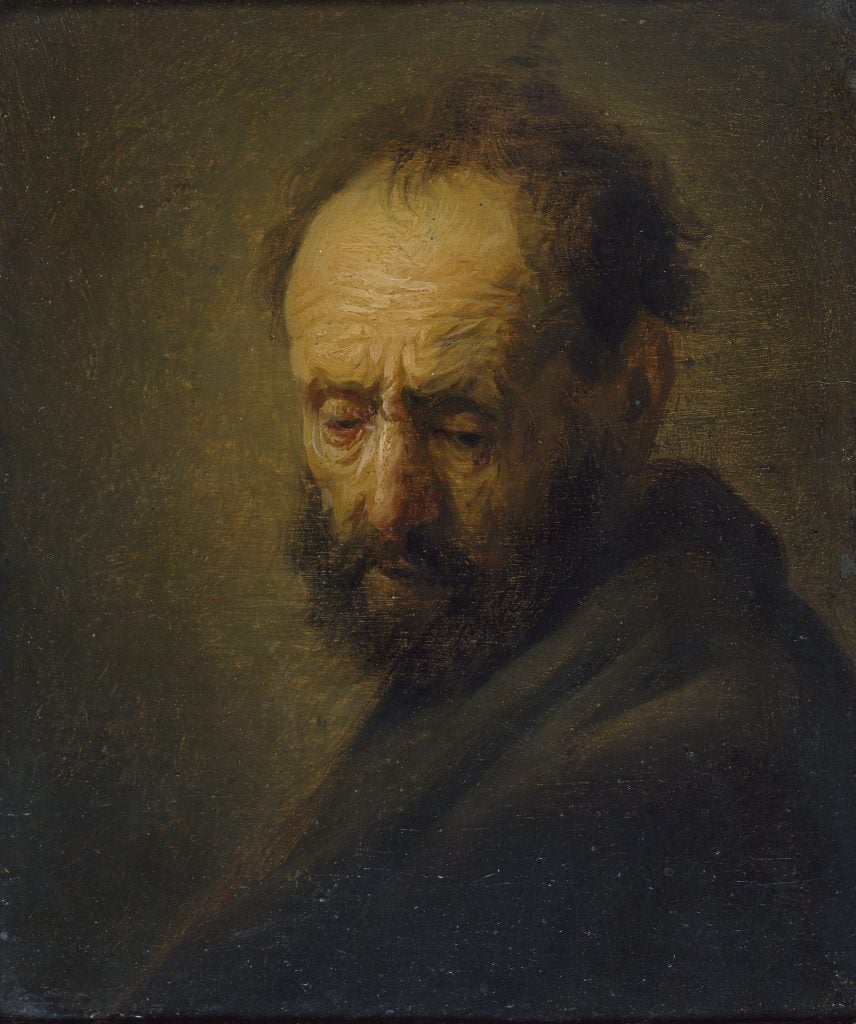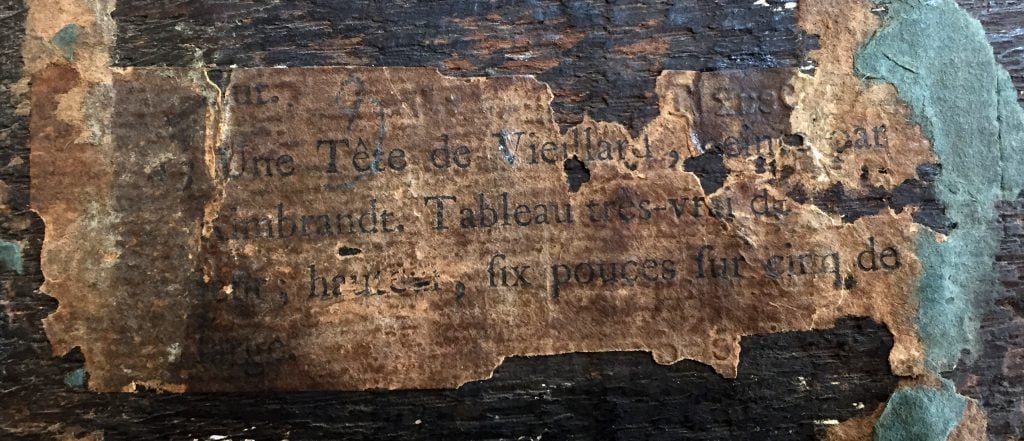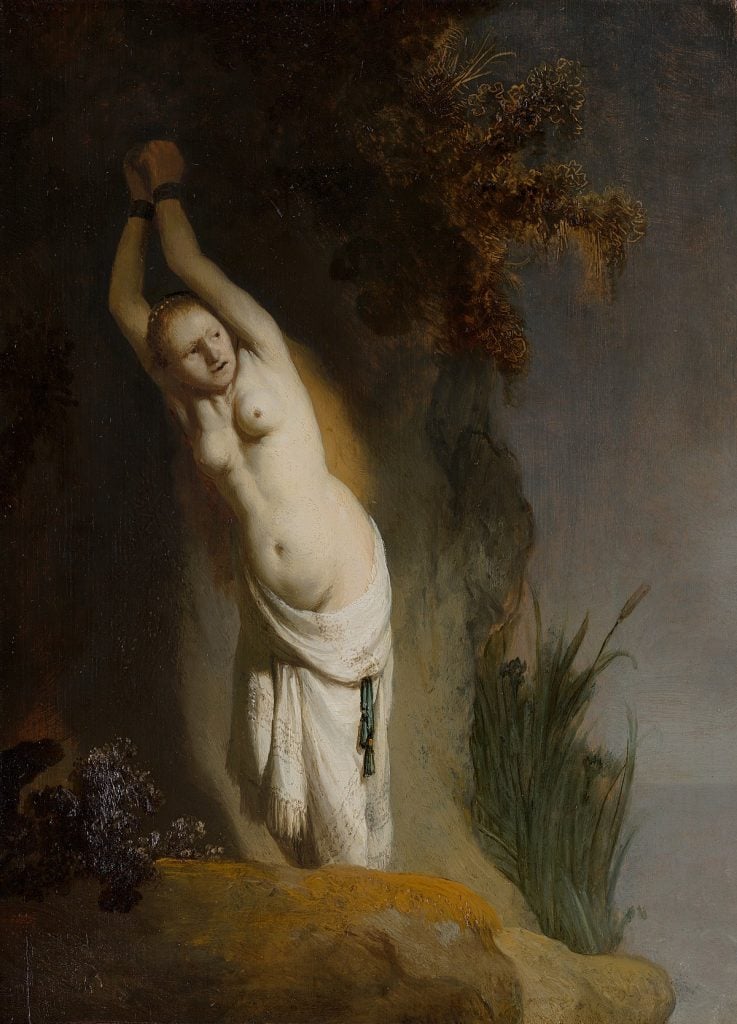On View
An Oxford Museum May Have Accidentally Kept a Rembrandt Painting Languishing in Its Basement for 40 Years, New Tests Suggest
The painting had been dismissed as a copy in 1981.

The painting had been dismissed as a copy in 1981.

Sarah Cascone

A painting once rejected as a lowly copy of the work of Dutch master Rembrandt van Rijn may be the real thing after all, announced the Ashmolean Museum in Oxford on Friday. New scientific research has found that Head of a Bearded Man was almost certainly painted in the great artist’s studio, possibly by Rembrandt himself.
The painting, donated by an anonymous British art collector and dealer in 1951, had been previously accepted as an authentic Rembrandt, until the Rembrandt Research Project reviewed the work in 1981. The authenticating body ruled that the picture was a mere copy, perhaps not even painted during the artist’s lifetime, and the museum exiled the wood panel to its basement.
This week, Head of a Bearded Man will make its triumphant return to the galleries as a late addition to “Young Rembrandt,” the Ashmolean’s exhibition tracking the artist’s early career and artistic development. (The show’s dates have been extended through the fall following the museum’s reopening in August.)
“It is incredibly exciting to find out that a previously unidentified painting can be placed in the workshop of one of the most famous artists of all times,” said An Van Camp, the Ashmolean’s curator of northern European art, in a statement. “I am delighted to have the chance to show the panel in our exhibition where it can be seen alongside other works painted in Rembrandt’s workshop at the same time.”

This 1777 label on the back of Head of a Bearded Man (circa 1630) identifies the panel painting as the work of Rembrandt. Photo courtesy of the Ashmolean Museum.
Van Camp had been curious about the small, disgraced picture in museum storage since she joined the institution in 2015. “It is very typical of what Rembrandt does in Leiden around 1630,” she told the Guardian. “He does these tiny head studies of old men with forlorn, melancholic, pensive looks.”
While the exhibition was on pause, Van Camp and museum conservators Jevon Thistlewood and Morwenna Blewett enlisted Peter Klein, an internationally renowned dendrochronologist, who analyzes tree ring growth to date wooden samples, to examine the painting.
He determined that the wood panel had to have come from the same tree as two other historic paintings: Rembrandt’s Andromeda Chained to the Rocks (circa 1630, Mauritshaus, The Hague) and Jan Lievens’s Portrait of Rembrandt’s Mother (circa 1630, Staatliche Kunstsammlungen, Dresden). At the time, Rembrandt and Lievens were both young artists working in Leiden, and possibly even sharing a studio.

Rembrandt_van_Rijn, Andromeda (circa 1630). Photo courtesy of the Mauritshuis.
The panel “came from an oak tree in the Baltic region, felled between 1618 and 1628,” Klein said in a statement. “Allowing a minimum of two years for the seasoning of the wood, we can firmly date the portrait to 1620 to 1630.”
These new findings are quite promising—which is why Head of a Bearded Man will go on view at the Ashmolean starting Wednesday. But they aren’t enough to reauthenticate the work outright.
“It requires further conservation and cleaning before any more conclusions can be drawn about it,” a museum representative told Artnet News in an email. “We will do this when it comes off display at the end of the exhibition.”
“Young Rembrandt” is on view online and at the Ashmolean Museum, Beaumont Street, Oxford OX1 2PH, UK, August 10–November 1, 2020.